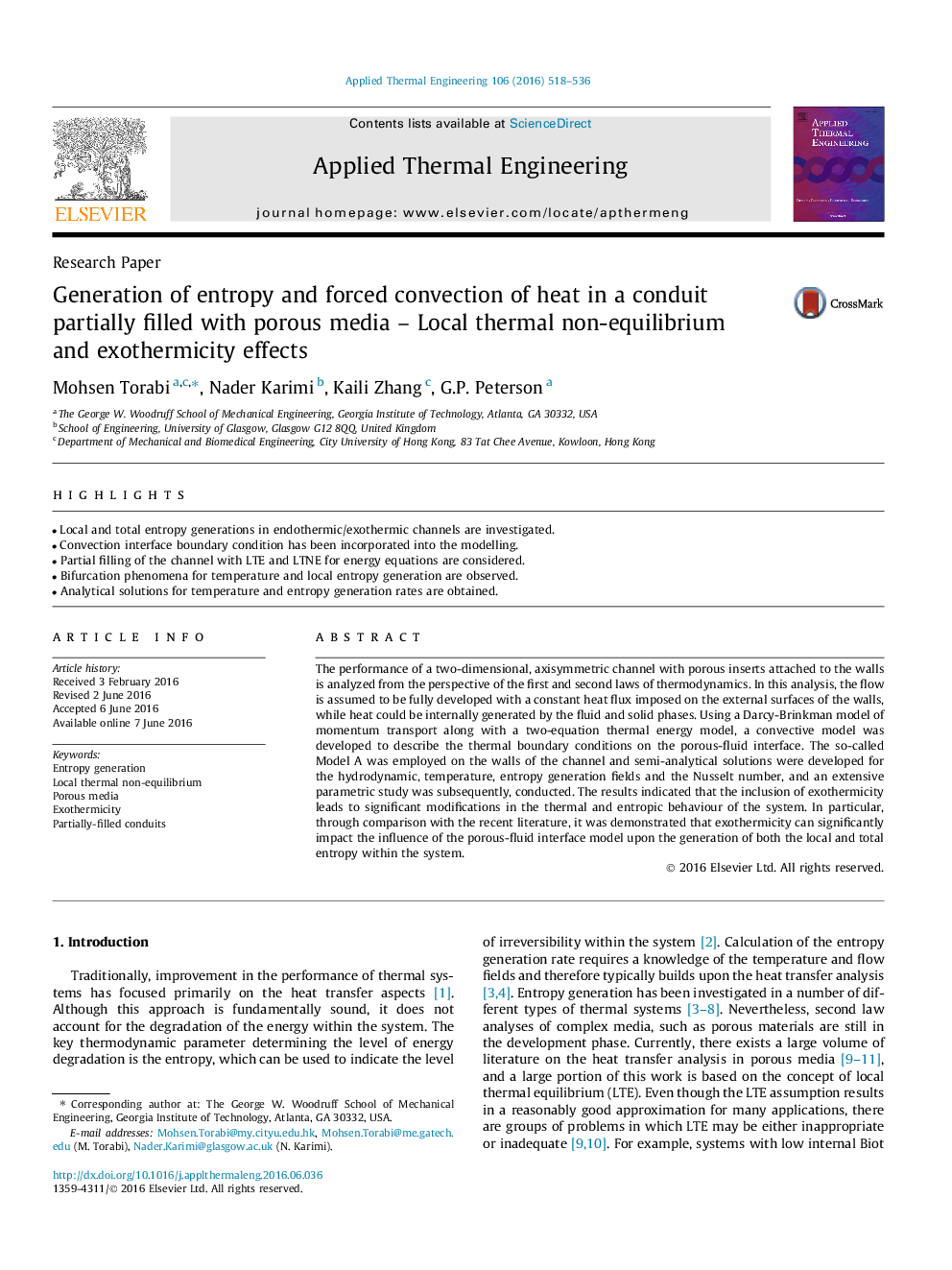| Article ID | Journal | Published Year | Pages | File Type |
|---|---|---|---|---|
| 7047449 | Applied Thermal Engineering | 2016 | 19 Pages |
Abstract
The performance of a two-dimensional, axisymmetric channel with porous inserts attached to the walls is analyzed from the perspective of the first and second laws of thermodynamics. In this analysis, the flow is assumed to be fully developed with a constant heat flux imposed on the external surfaces of the walls, while heat could be internally generated by the fluid and solid phases. Using a Darcy-Brinkman model of momentum transport along with a two-equation thermal energy model, a convective model was developed to describe the thermal boundary conditions on the porous-fluid interface. The so-called Model A was employed on the walls of the channel and semi-analytical solutions were developed for the hydrodynamic, temperature, entropy generation fields and the Nusselt number, and an extensive parametric study was subsequently, conducted. The results indicated that the inclusion of exothermicity leads to significant modifications in the thermal and entropic behaviour of the system. In particular, through comparison with the recent literature, it was demonstrated that exothermicity can significantly impact the influence of the porous-fluid interface model upon the generation of both the local and total entropy within the system.
Related Topics
Physical Sciences and Engineering
Chemical Engineering
Fluid Flow and Transfer Processes
Authors
Mohsen Torabi, Nader Karimi, Kaili Zhang, G.P. Peterson,
